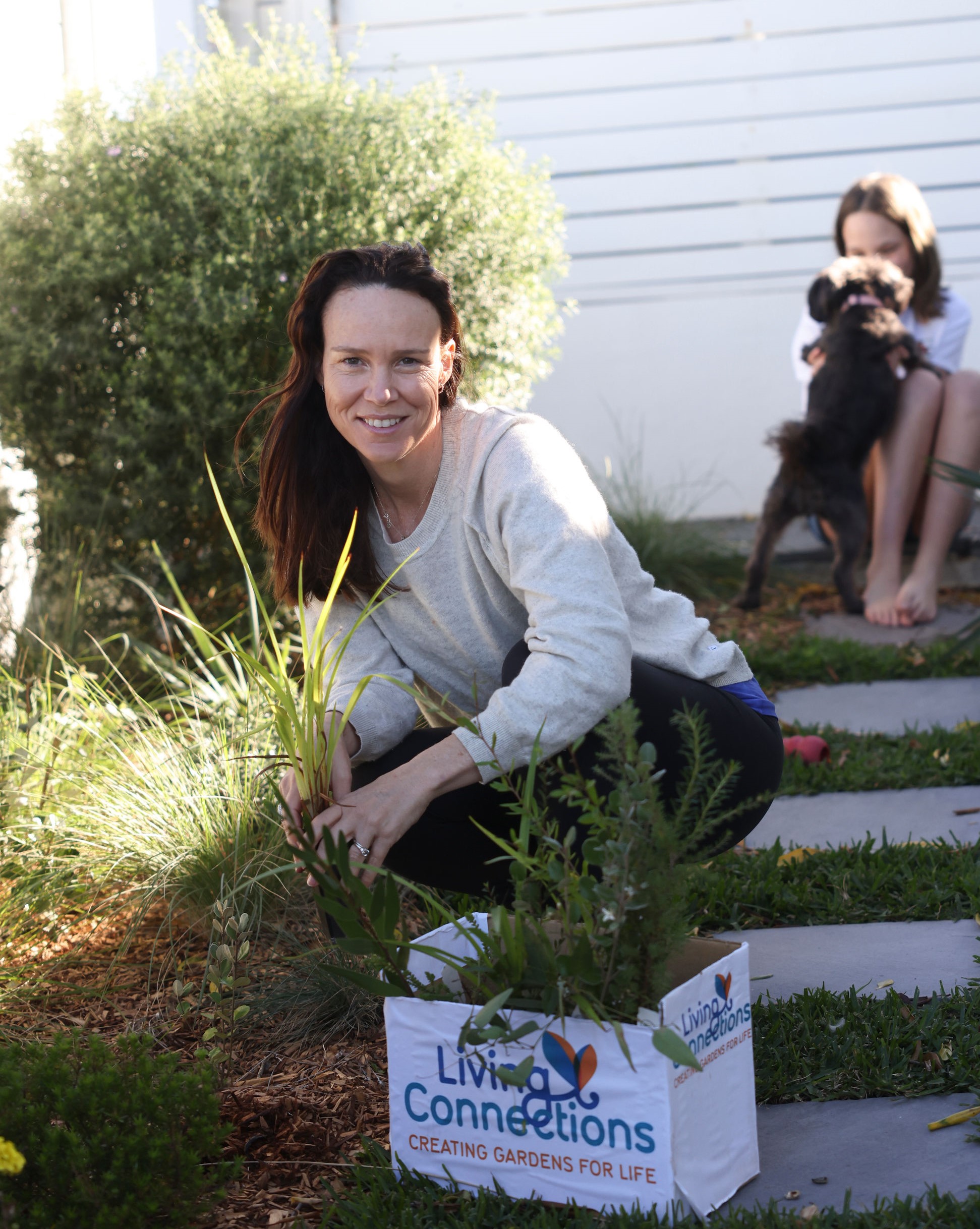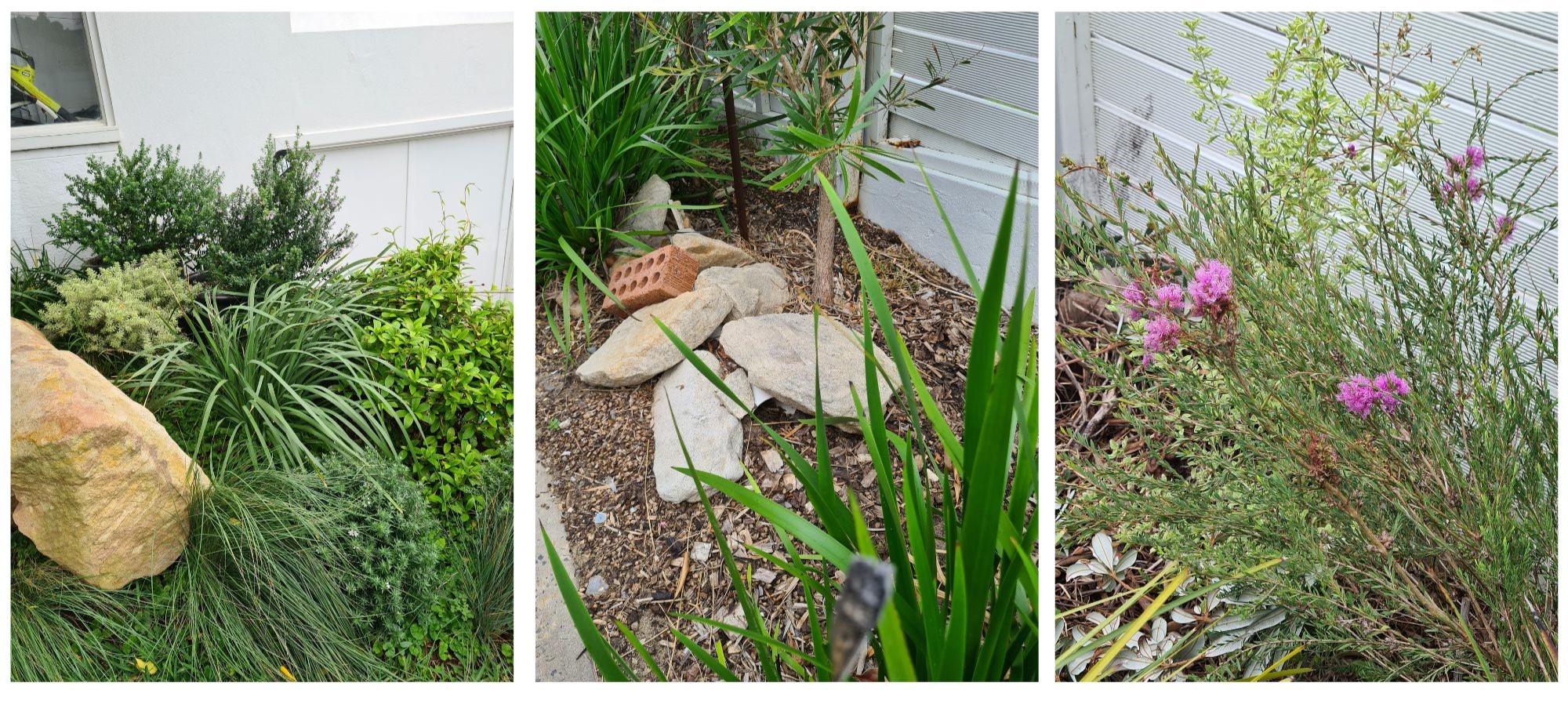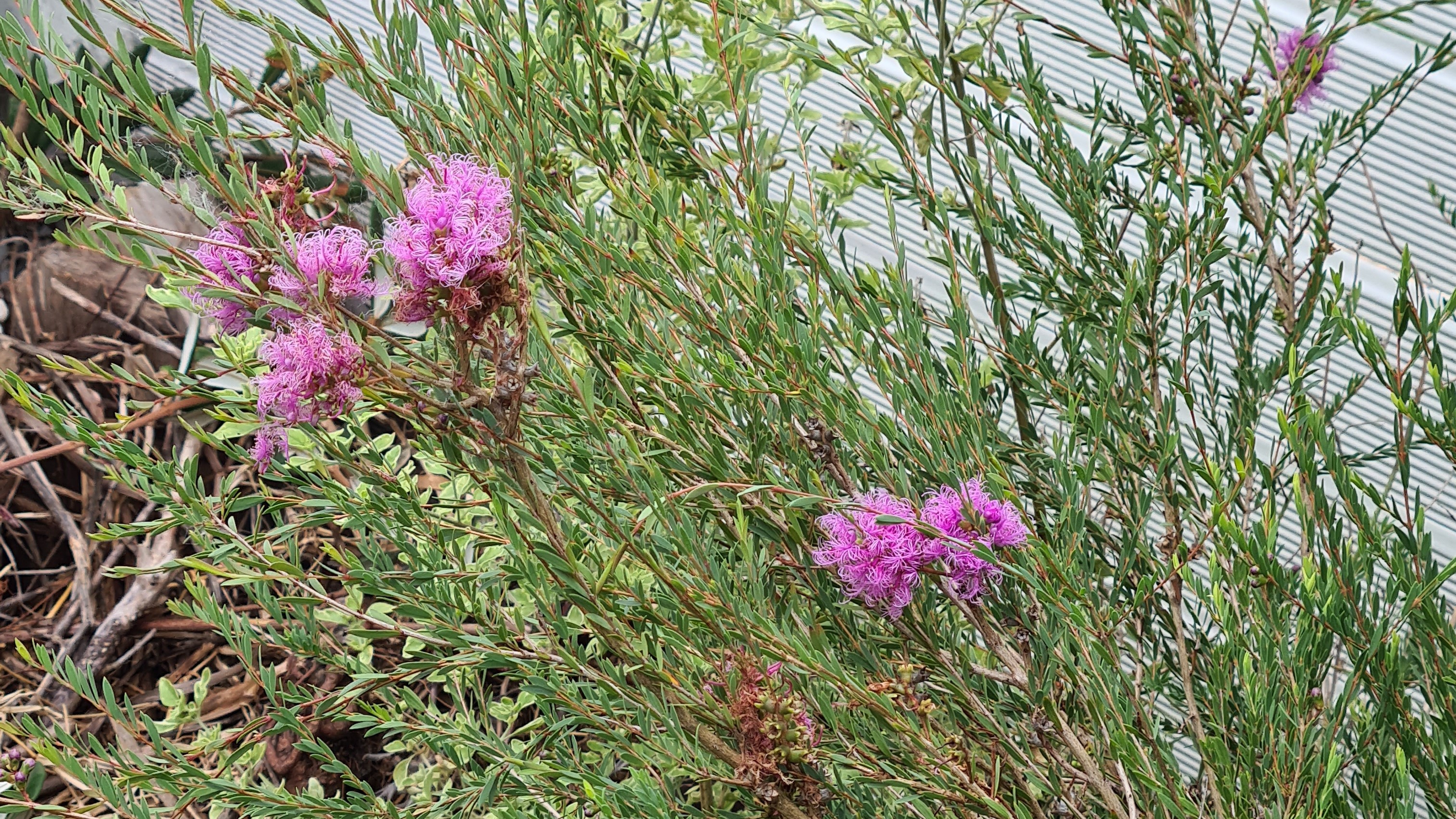Habitat Gardening
During lockdown, local photographer Megan Blumenthal started investigating native plants for her garden. Late last year, motivated by disappearing greenspace in the eastern suburbs, she joined Waverley Council’s Living Connections program to learn more, receive indigenous plants for her particular needs and to also connect with local, like-minded habitat gardeners.

I joined Living Connections because I was becoming increasingly disheartened by the huge amount of building development and the massive reduction in native green-space in the eastern suburbs. I felt quite isolated in my views of wanting to protect our local habitat and wildlife. So, I was really seeking some direction and a community with likeminded views. Living Connections seemed like the perfect place to start!
The native garden began was a lock-down project, with only Pinterest as my inspiration and using online nurseries to source everything (even sandstone feature rocks). The plan for my garden has evolved into a more thoughtful and specific vision since I started.
And working iteratively, I have learnt so much along the way. For example, I now choose plants indigenous to Waverley, rather than just natives, which could originate from anywhere in Australia. My goal now is more about habitat design rather than just looking pretty. Being a photographer and a creative person, I still want the garden to be visually appealing, but it now also needs to provide food and shelter for small birds and lizards.
As much as I love my kangaroo paws, and I still have a few scattered around because they make me so happy, I only plant local indigenous species now. This is because indigenous plants have evolved with the coastal conditions and soils – so they generally do better and they also require less maintenance, which is great as I work full time and have two young children.
Plants that I love and that are doing really well, include coastal rosemary (Westringia), coastal and hairpin banksia’s (spinulosa & integrifolia), pink spider flower grevillea (Grevillea sericea), white correa (Correa alba), purple coral pea (Hardenbergia violacea), sweet wattle (Acacia suaveolens), knobby Club-rush (Ficinia nodosa), heath myrtle (Baeckea imbricata), white kunzea (Kunzia ambigua), peach blossom tea-tree (Leptospermum squarrosum), weeping baekea (Baeckea linifolia), coastal flax lily (Dianella congesta) and the shade loving native violet (Viola hederacea).

We see more insects visiting the flowers now and lizards under and over rocks. With the kids, we built a lizard house made of a PVC pipe bricks and sandstone. We live near the coastal walk so hopefully in time, as the plants mature, our garden will become a stepping stone for the small wrens and honeyeaters.
The garden is going very well and I have been applying many of the new tips I learnt at the recent native gardening workshop hosted by Waverley Council, such as targeted pruning, to encourage the plants to grow thick and bushy. We no longer have grass in the back garden and the next phase will be to reduce the grass in the front garden and replace with native plants.
The biggest challenge has been finding plants that will thrive in the front south facing garden, especially in winter. We have very strong winds as we are near the coast, so it has been a real learning experience in picking the right plants that will survive in those conditions.
Now that I have started on the north facing back garden, it’s been a lot easier!
My biggest advice would be to just start. No matter how small you think your garden is, there is always space to add life and increase you biodiversity. Once you get going its addictive! I’m now constantly trying to find new places to put plants. I find spots now that I would have either overlooked in the past or were just boring concrete dead zones.
Also consider planting in the verge in front of your property. These are often great spaces that can be transformed with time and energy, from just grass that has to be mowed, into a place for plants and pollinators to thrive. A verge garden application form needs to be submitted to Council, but this is straightforward, and the process of filling out the checklist also provides guidance and suggested species. Even renters can create habitat with pots and grow bags, as many natives grow well in pots if they they have adequate drainage and the correct soil. Check the Waverley Habitat Gardening Guide for advice on which ones grow well in pots.
Learn more about habitat gardening in Waverley and the Living Connections Program.


